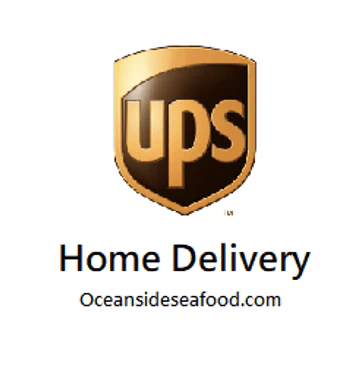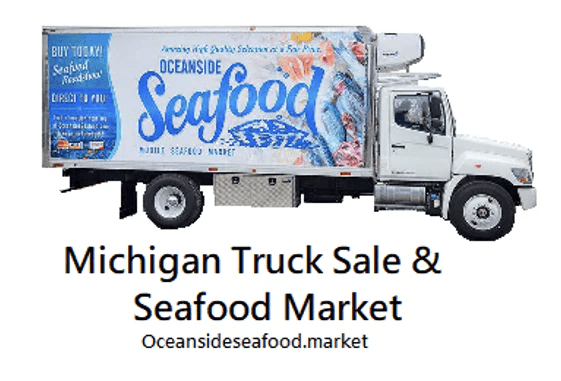Everything You Need to Know About Cooking Frozen Seafood
Moose May, LLCHave you ever wondered how you should thaw and cook frozen seafood? There are many more different seafood cooking methods than meat and poultry, but that doesn't mean they are any more complicated. With the right techniques and a quality frozen seafood product, you can create a fish dish that your whole family can enjoy.
With the unmatched freshness, simplicity, and convenience of purchasing seafood online, you can utilize a seafood delivery service to cook frozen seafood any time of the year.
Defrosting Frozen Seafood
Turning frozen seafood into a fresh, ready-to-eat meal is quick and easy. Unlike meat or poultry, seafood does not require pre-thawing in the refrigerator. Before you preheat your oven or pan, there are just a few simple steps to follow when it comes to defrosting your seafood.
The first step is to remove your fish or other seafood from its packaging. If your seafood has arrived in a vacuum-sealed package, there's no need to remove it. Simply place the entire contents under cool running tap water.
Depending on the size of the seafood you are using, you should only need to run the cool water over your seafood for a few minutes. Next, make sure to rinse off and remove any chunks or crystals of ice that may have formed around the piece of seafood.
Lastly, cook up and enjoy your seafood as soon as possible after thawing to ensure freshness and optimal flavor. If you're looking for new or different ways to prepare your favorite kinds of seafood, stay tuned to learn more about the different seafood cooking methods we love.
Popular Seafood Cooking Methods from Frozen
One of the best aspects of cooking seafood is its versatility. The mild yet unique flavor of so many kinds of seafood lends itself to various cuisines. No matter how you like to season your fish, there are several seafood cooking methods to utilize.
These are four of the most popular cooking methods that apply to frozen seafood:
- Stovetop
- Baking
- Grilling
- Smoking
Let’s learn more about how to serve up seafood using these four seafood cooking methods.
Seafood Cooking Methods: Stovetop Seafood
If you prefer a pan fry or a sauté, your best bet for preparing frozen seafood is to turn to your stovetop. There’s no big fuss about cooking frozen seafood. Just add your seafood to a warmed pan and consider cooking off any excess water or ice before adding your seasonings and oil. Or, you can also pat dry your fish to ensure it will form a crisp crust after cooking.
Seafood Cooking Methods: Oven-Baking
The oven is a great kitchen tool to cook frozen seafood, such as fish. Whether you prefer sheet pan meals, roasting, or baking, consider utilizing your oven as a seafood cooking method for frozen fish.
Follow these tips to take your oven-baking to the next level:
- Ensure oven is preheated at least to 350 degrees
- Use a pan deep enough to catch any residual water or liquid from frozen seafood.
- Finish off on a low broil for 30 to 60 seconds for extra crispiness
Remember, cook time may vary depending on the weight and type of seafood you are cooking - follow this guide for cook times when baking.
Seafood Cooking Methods: Grilling Frozen Seafood
Two things that pair perfectly together are summertime and grilling. So why not introduce your favorite frozen seafood dishes to your charcoal or propane grill setup? The flavor and crust developed on shrimp, fish, and other seafood is unmatched, not to mention that cook times on an open flame are fairly quick.
Seafood Cooking Methods: Smoked Fish
While grilling is hot and fast, smoking is a low and slow method of cooking fish and seafood. Frozen seafood and a smoked cooking method are a well-matched pair considering the low prep time. Smoked fish like salmon or whitefish can be stored in your refrigerator for seven to ten days after cooking has been completed, making it an excellent weekday snack or meal.
Smoking fish happens on shallow heat with flavored wood chips over a long period of time, allowing any frozen fish to break down all on its own with little to no defrosting. If you prefer the convenience of purchasing already smoked seafood, we've got you covered! Check out our selection of smoked seafood delicacies.
Checking for Seafood Temperature
No matter how you cook our fish, checking for doneness can be measured the same way: utilizing an internal temperature thermometer. When you're cooking seafood, you want to make sure that the center and thickest part of the fish has reached 145 degrees. You can also observe the fish for physical characters, such as a change in color to a creamy white and flaky texture. These characteristics signal the doneness of the fish.
Our Favorite Meals to Cook from Frozen
When it comes to preparing frozen food, there are so many different seafood cooking methods to try. If you’re in a pinch for dinner or just looking to explore new recipes, check out some of our favorite meals to cook with frozen seafood:
- Seafood paella - Cook rice with vegetables, a seafood blend, and a pinch of saffron for this Spanish dish
- Clam chowder - Steam clams with half and a half, then add potatoes and scallions.
- Seafood boil - Add your favorite kinds of seafood to steam with corn, potatoes, sausages, and cajun seasoning.
Whether you’re just getting started or a pro in the kitchen, we have tons of seafood recipes to help you spice up your meals.
Whatever you decide to make, one thing is for certain; fresh seafood will give your dish the best flavor. Let's learn how freezing seafood at its peak preserves its freshness for longer shelf life.
Preserving Freshness for Seafood Delivery
With the convenience and simplicity of our seafood delivery service, you can order online, and have all of your favorite kinds of seafood like shrimp, crab, and lobster delivered right to your door. You don't have to worry about these foods spoiling before you've had a chance to enjoy them - our seafood orders are packaged using dry ice to keep all items cool during delivery.
Our fish are frozen at the peak of freshness, helping them to preserve their optimal flavor. So when you can’t go out to the lake to reel them in yourself, consider a seafood delivery service like Oceanside Seafood.



